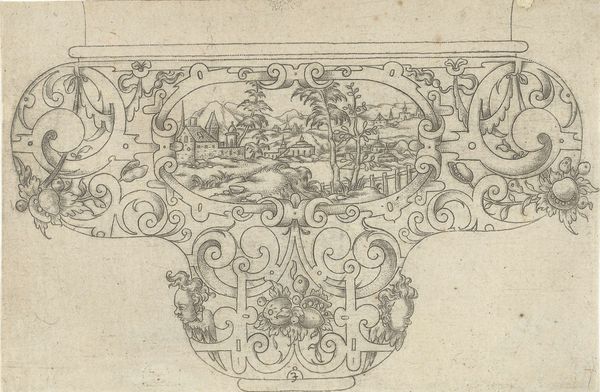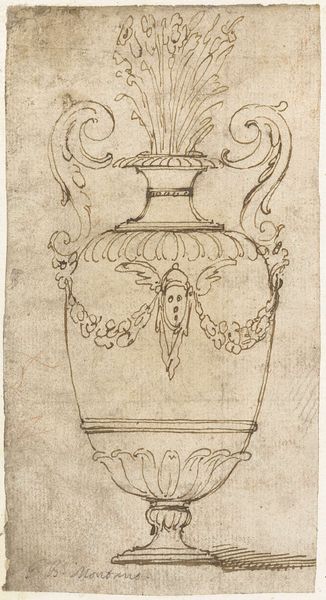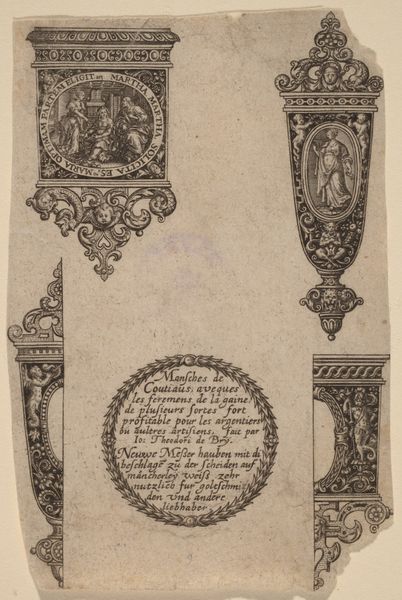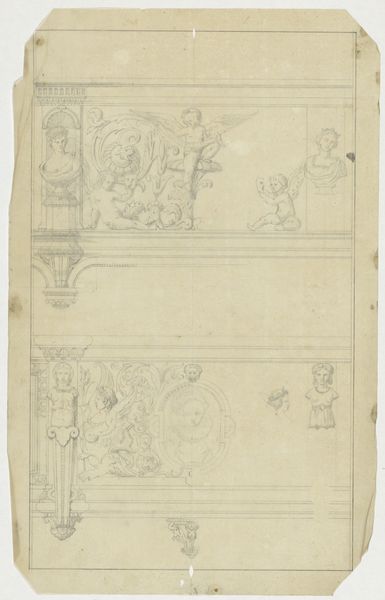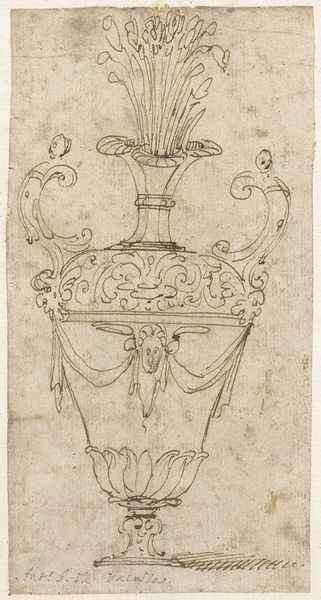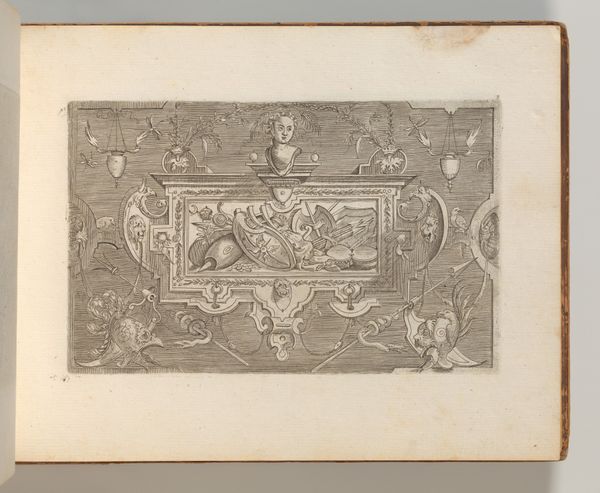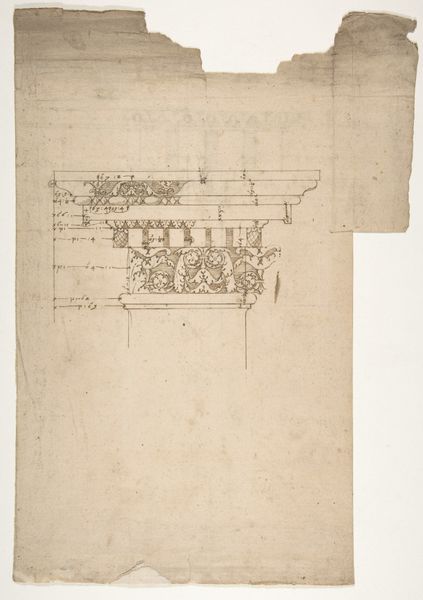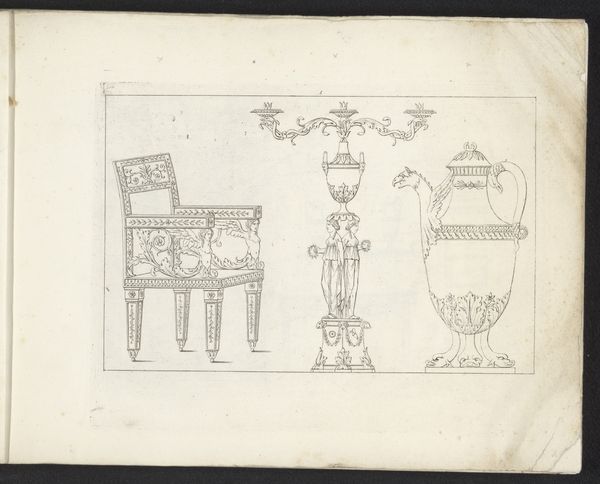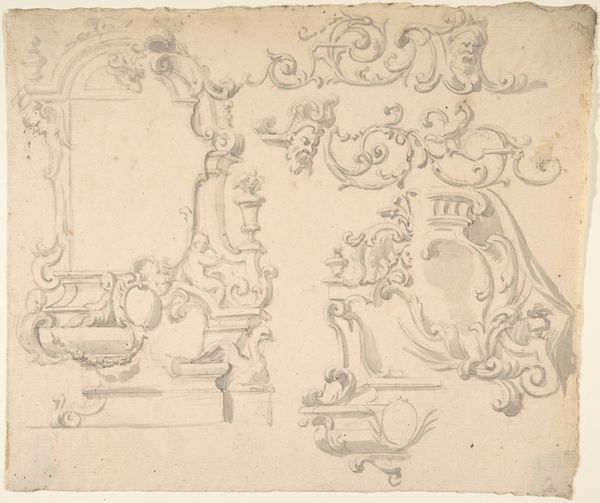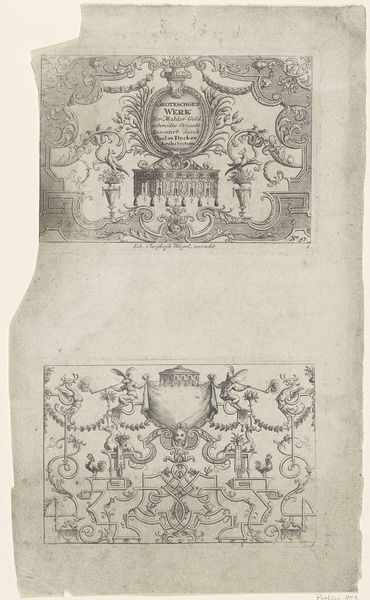
drawing, silver, print, pencil, engraving
#
drawing
#
medieval
#
silver
# print
#
sketchwork
#
pencil
#
engraving
Dimensions: sheet: 5 1/8 x 7 in. (13 x 17.8 cm)
Copyright: Public Domain
Editor: Here we have a drawing entitled "Medieval Silver Cup," created sometime between 1870 and 1900. It depicts, through pencil and engraving, what seems to be a silver cup. The sketchiness gives it an incomplete feeling, like a glimpse into a past that never fully materialized. What do you make of this piece? Curator: The most striking aspect of this work is the presence of heraldic symbols. Note the lion, a recurring motif in medieval European heraldry. It signified courage, nobility, and royalty, and its inclusion elevates a simple drinking vessel to a statement of power and lineage. This isn't merely decoration; it is cultural memory rendered visible. Editor: So the cup itself would be less important than what it symbolizes? Curator: Precisely. Imagine the object within a great hall. The light glinting off the silver, catching on that lion… the owner purposefully signaling their status. This cup served as a constant, visual reminder. Also consider the dragon motif… a common symbolic reference to greed and avarice. In this context what statement do you think the patron was trying to convey by including these somewhat contradictory representations of virtue and vice? Editor: I suppose it is the complex nature of humans, no one is perfectly one way or the other... I hadn't considered that an everyday object could carry such historical weight. I guess I was just thinking about art on canvas, like paintings. Curator: It’s a fascinating lesson in how symbols and art can be subtly interwoven into even the most utilitarian objects, carrying narratives far beyond their immediate purpose. This is just a drawing for the final item though, something interesting about its process… Editor: It does make you wonder about all the hidden stories everyday objects around us might tell! Thanks so much for sharing.
Comments
No comments
Be the first to comment and join the conversation on the ultimate creative platform.
